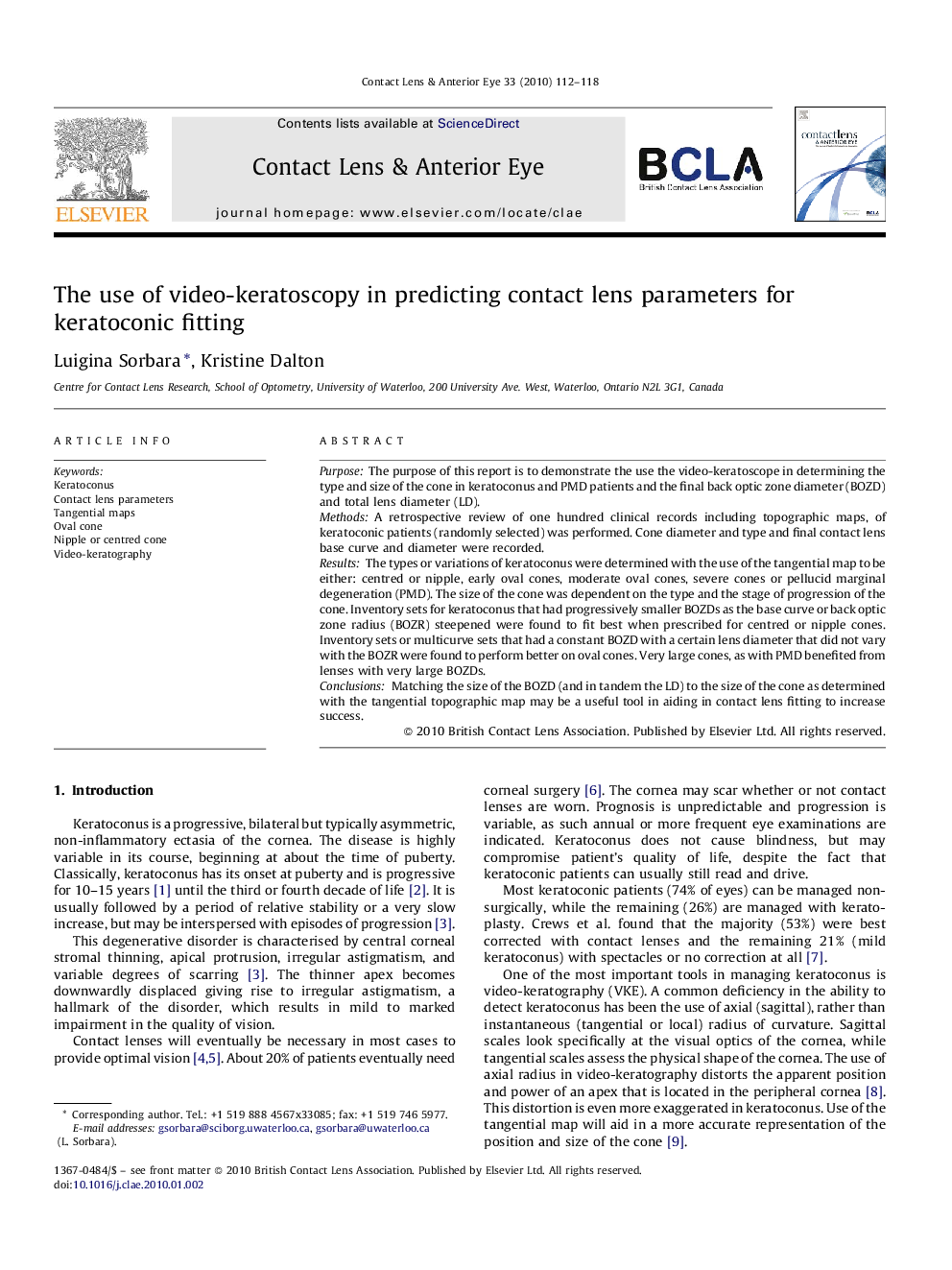| Article ID | Journal | Published Year | Pages | File Type |
|---|---|---|---|---|
| 2696826 | Contact Lens and Anterior Eye | 2010 | 7 Pages |
PurposeThe purpose of this report is to demonstrate the use the video-keratoscope in determining the type and size of the cone in keratoconus and PMD patients and the final back optic zone diameter (BOZD) and total lens diameter (LD).MethodsA retrospective review of one hundred clinical records including topographic maps, of keratoconic patients (randomly selected) was performed. Cone diameter and type and final contact lens base curve and diameter were recorded.ResultsThe types or variations of keratoconus were determined with the use of the tangential map to be either: centred or nipple, early oval cones, moderate oval cones, severe cones or pellucid marginal degeneration (PMD). The size of the cone was dependent on the type and the stage of progression of the cone. Inventory sets for keratoconus that had progressively smaller BOZDs as the base curve or back optic zone radius (BOZR) steepened were found to fit best when prescribed for centred or nipple cones. Inventory sets or multicurve sets that had a constant BOZD with a certain lens diameter that did not vary with the BOZR were found to perform better on oval cones. Very large cones, as with PMD benefited from lenses with very large BOZDs.ConclusionsMatching the size of the BOZD (and in tandem the LD) to the size of the cone as determined with the tangential topographic map may be a useful tool in aiding in contact lens fitting to increase success.
